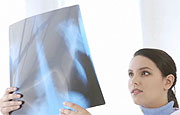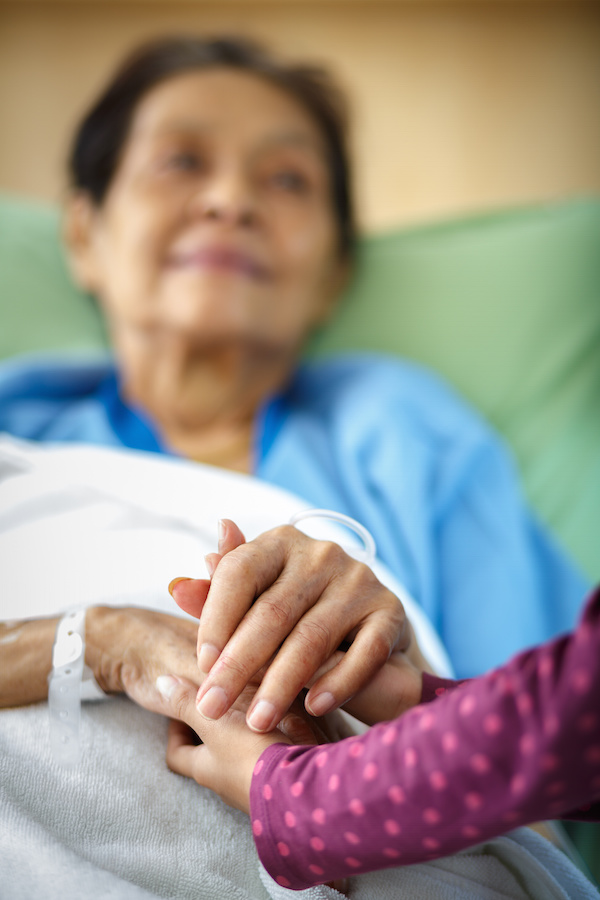
THURSDAY, June 30 (HealthDay News) — Annual low-dose CT scans cut the death rate from lung cancer by 20 percent in heavy smokers and formerly heavy smokers, compared to those who get annual chest X-rays, according to the results of a major National Cancer Institute study released on Wednesday.
Experts are calling the findings a major advance in efforts to combat lung cancer deaths. By catching the cancer early, the tumors can be removed surgically — hopefully before they’ve spread and become very difficult to cure.
“This is a momentous time in the history of public health research,” said Dr. Otis Brawley, chief medical officer of the American Cancer Society. “The NLST [National Lung Screening Trial] is the best-designed and best-performed lung cancer screening study in history.”
Yet the findings raise as many questions as they answer, said Dr. Harold Sox, a professor emeritus of medicine at Dartmouth Medical School who wrote an accompanying editorial to the study published in the June 30 issue of the New England Journal of Medicine.
“Screening for lung cancer can reduce the death rate from lung cancer, and that’s a very important, game-changing result,” Sox said. “It’s an enormous advance. But the next questions are: What should we do about it? And how should we maximize the results for the societal investment it’s going to take?'”
The National Lung Screening Trial included more than 53,000 current and former heavy smokers aged 55 to 74 who were randomly selected to undergo either a “low-dose helical CT” scan or a chest X-ray once a year for three years. Helical CT, also called a “spiral” CT, provides a more complete picture of the chest than an X-ray, experts said. While an X-ray is a single image in which anatomical structures overlap one another, a spiral CT takes images of multiple layers of the lungs to create a three-dimensional image.
The death rate was 20 percent lower in those who got the CT scans than in those who had X-ray screening.
Study participants consisted of people who’d smoked at least 30 “pack years” — meaning, current or former smokers who’d smoked an average of one pack a day for at least 30 years, or two packs a day for at least 15 years.
According to the U.S. National Cancer Institute, screening with a spiral CT costs from $300 to $1,000, which means insurers and policy-makers have to consider who is going to pay for it, and who should receive one, Sox said.
Could CT scans benefit people who are at a somewhat higher risk of lung cancer, but who don’t meet the 30 “pack years” threshold? Would screening every other year cost half as much and work just as well? Is three years long enough to screen someone, or does the screening need to be done every year for as long as the person is alive?
Also, in this era of rising health-care costs, what is the responsibility of insurance companies or Medicare to pay for the test? And is it more cost-effective to put resources into preventing smoking and smoking-cessation programs instead of paying for CT scans?
While there are about 7 million people in the United States who meet the “heavy smoker” criteria used in the trial, there are 94 million current and former smokers, according to the study authors.
“Those are big questions in terms of costs, when you are talking about 7 million to 94 million people,” Sox said.
Dr. Therese Bevers, a professor of clinical cancer prevention at M.D. Anderson Cancer Center in Houston, urged people with a shorter smoking history not to rush out and demand a CT scan. The study results showed benefit specifically for people who’d been heavy smokers for a long time.
“It’s not appropriate for every smoker, such as the more casual or short-term user. Thirty pack years is a very significant smoking history,” Bevers said. “If you smoked when you were in college 20 years ago, this is probably not appropriate for you.”
And yet, 30 “pack years” is by no means an absolute yardstick, she added. Other studies have suggested CT screening might be worthwhile in people who smoked a pack of day for 20 years — less than what was looked at in the new trial, but still a long history of smoking.
Another consideration is the risk of radiation from the scans. While the CTs used in the study emit less radiation than conventional CT scans, it’s not non-existent, said Dr. Christine D. Berg, study co-investigator and acting deputy director of the Division of Cancer Prevention at the U.S. National Cancer Institute.
Radiation is a special concern for younger people who have been shown to be both more susceptible to its effects and who have many more years of life in which to develop cancer caused by radiation, she said.
“I am very reluctant to see this move into a much younger population until we have more information,” Berg said.
The next step for researchers is to do mathematical modeling that will address whether the potential upside of screening outweighs the risks of screening, Berg added.
Anxiety created by “false-positive” readings is another concern, experts said. Over the course of three years, about 24 percent of the low-dose helical CT screens were positive and 7 percent of the X-rays were positive.
About 81 percent of those patients needed follow-up imaging to determine if the suspicious lesion was cancer; 2.2 percent underwent biopsy of the lung tissue and 3.3 percent needed a bronchoscopy, in which a tube is placed into the airway, researchers said.
The vast majority of scans that were initially positive turned out to be “false positives” — 96.4 percent of the CT scans and 94.5 percent of the X-rays. False positive means the screening test spots an abnormality, but it turns out not to be cancerous. (Put another way: 3.6 percent of the CT scans that flagged an abnormality were later found to be cancerous and 5.5 percent of the X-rays that spotted something suspicious turned out to be cancer.)
Often, the abnormalities turned out to be lymph nodes or scarring from past infections.
“As this study demonstrates, the rate of findings suspicious for lung cancer was high in each screening round (over 27 percent in the first two rounds), but low-dose CT exams also can identify other non-lung related abnormalities, and this positivity rate also was high,” Brawley said. “So managing abnormal findings and avoiding doing harm in individuals with false-positive findings are among the major challenges we will confront.”
And sticking a needle deep into the tissue of the lung for a biopsy is an invasive procedure that has its own set of risks, such as a collapsed lung, Bevers said.
The trial also found that about 1 percent of people who underwent surgery to remove a cancerous tumor died. Nationwide, that number is closer to 4 percent, which may erase some of the life-saving gains from the early detection, Sox said.
The American Cancer Society has not yet issued recommendations on who should be screened for lung cancer using a CT scan, although this study, as well as other ongoing and soon-to-be published studies out of Europe, will be taken into consideration, Brawley said.
“Guidelines groups have yet to carefully evaluate these and other data to determine who should and should not consider undergoing screening for early lung cancer detection and how often,” he said.
Above all, if you smoke, quit, Brawley said. That, more than anything else, will help you avoid getting sick.
“We estimate that quitting smoking will in 10 years’ time reduce a smoker’s risk of death from lung cancer as much as CT screening did in this study,” he said.
More information
The U.S. National Cancer Institute has more on lung cancer.

